| Umělec magazine 2005/1 >> Colorful Adventures | List of all editions. | ||||||||||||
|
|||||||||||||
Colorful AdventuresUmělec magazine 2005/101.01.2005 Jaroslav Žila | reportage | en cs |
|||||||||||||
|
Teaching art is not easy. The art of teaching requires a different gift than the art of creating. We would like to introduce you to our brief encounter with artists who have children attending a special school in Ostrava. We were interested in the distinctive works that emerged from work frequently created by artists and children at the same time. In their works one can recognize the hand of the artist influenced by a child’s element.
The idea was born some time in the spring of 1997 at a “cultural” session in the Černý pavouk pub, when Petr Pastrňák told me he wanted to work with children at our special school in Ostrava - Mariánské Hory for a few days. It seemed to be an interesting idea, but first I had to persuade the directors of the school and solve another problem - getting money for the materials. Finally, we got it from a grant from the Moravská Ostrava city district (it is interesting to note that our own local municipality, Mariánské Hory, never supported us in those years). The first joint workshop with the title Dobrodružství barev (Adventures of Colors), receiveda positive response. After that there were other workshops: Adventures of Colors II (1998) and Adventures of Colors III (2004). Both events were again subsidized by Moravská Ostrava. Taking part in the workshops with children from our special school were: Jakub Špaňhel, Petr Pastrňák, Pavel Šmíd, Aleš Hudeček, and photographer Martin Popelář, who documented the events. This year we also had the assistance of the most impressive phenomenon of Ostrava’s art scene, Jiří Surůvka. We have to mention as well the sculptures that the students created under the kind supervision of Jaroslav Koléško. Nearly the entire Ostrava fine arts community worked with our children. The results of the first two years of the workshop were presented in Klub Atlantik and Gallery 761 in Ostrava. Later we included students’ copies of the works by early 20th century Czech masters from the Ostrava Gallery of Fine Arts. These were created under the supervision of Aleš Hudeček and Katarína Szányiová-Hudečková. The whole collection was presented at a large joint exhibition of our school and the Fine Arts Gallery in Dům umění in Ostrava (2001, curator A. Weglarzynová). It was interesting to observe how each of these art personalities chose their own, very different method of working. Petr Pastrňák used plastic foam rollers, airbrush and stencils. Jakub Špaňhel worked with airbrush and mixed media. For Aleš Hudeček disciplined painting was typical, with an emphasis on exact coloring. Szányiová-Hudečková’s unusual idea, of working with copies of Čapek and Špála in dry pastels, came out very nicely. Pavel Šmíd captured the children’s imagination with an ingenious conception of linoleum prints on T-shirts, scarves and a flag, and Jiří Surůvka introduced a photo-series in which the children took pictures of their school’s surroundings. All these approaches created a kind of higher, unique whole. Is there anything I regret? A lack of money which prevented us from inviting more people who presently live in Prague. Do I have a wish? To realize an excellent idea of Pavel Šmíd – a Roma fair with everything that goes along with such an event. Pavel Šmíd on the project: The most important thing was to create a project for the Roma. I had big dreams - originally I wanted to have either a carnival or a theatrical performance. I liked the idea that they would go into the city in the masks we made during the workshop where they could participate in the procession themselves. We realized the Roma are Catholics, mostly, so Honza Balabán offered to create a special Madonna for them. Soon after, more sober-minded people opened my eyes. They said: “You are naive. You are a “gadjo” (non-Roma), forcing on others something they would never think of themselves. This is exactly the view of a white gadjo.” In the end it was reduced to what I was able to do and what could be done within one week: Graphics. To make it easier for me they selected the most talented children from the school. I got students who were not only talented but also disciplined. I know that they had good intentions in the school, but this was not necessary. Graphics bring you into line in the process itself. It is like making a shelf: you want to have something, so you have no time to fool around. I was trying to do things which everyone can look at. One boy made a bishop, a man with a miter. I asked him why. He said he thought he was meeting some expectation of ours. And when we had said before: cut whatever you want, I thought that whatever you want meant whatever you want. When the boys came and one of them wanted to make the hockey star, Jágr, OK. There are no limits. Well, he had some problems with the penguin so I drew it for him. And then completely absorbed in the task he carved out that dream of his, although he didn’t manage the mirror image: Jágr ended up as Lágr. We burst out laughing, much to his delight. Jiří Surůvka on the project: I had worked with them before, when Helena Balabánová was director of a religious school in Ostrava - Přívoz. We were given a week to paint on a wall with the children. That was the beginning, and the school got money from many places. They had about 100,000 crowns from the Soros foundation, and they bought a potter’s wheel and a kiln. With the money left over they invited five artists to paint with the Roma children on the walls of the club there. I had about five girls to make a design that we prepared to put on the wall. At the beginning it was fine, because every new activity is captivating. Children love that, something new all the time. They are a bit like Prague gallery visitors. The first twenty minutes they are really interested and then they get bored and want some new excitement. None of them were able to finish the painting. They came up to me and said: “It’s bad, isn’t it? Should I wipe it out? I will. I will paint over it.” And I kept saying? “No, no, it is good, it is very nice.” They need to be praised a lot. Then the intervals of coming for appraisal get shorter and shorter and finally they just jump up and down all over the place. They lose interest in the painting, toss the brush away and dance around. And you have to make them finish it. That was the biggest problem. I had a good trick, though: I would go there in a 1966 Cortina that I told them was Batman’s automobile. When I would leave the school in the afternoon, lots of those little Roma children would jump on my car and as I’d roll away slowly as they’d fall off. I had earned my respect already. That’s interesting. I think they would obey someone they knew from action movies. If I was Arnold Schwarzenegger, I’d have no problem working with them. So when I came to Mariánské Hory, I said: no painting, never, that would drive me crazy. I bought a digital camera, a cheaper one, for 3000 crowns. We went out for a walk—me, the teacher Žila and ten or twelve children. And they showed us who lives where and so on, and every time there was some Mercedes they all posed and took pictures with it. I only explained to them how the camera works. It is simple, a classical camera would be more difficult. They could see what they were photographing so in the end they made quite interesting details of their faces. There is an interesting series, girls of about fourteen, pretty Roma girls. The results are surprisingly good. They’d photograph, say, a figure in front of a shop selling work clothes with a dummy, particularly the face. Its nose was broken off. These pictures could be from the hand of a professional photographer.
01.01.2005
Recommended articles
|
|||||||||||||
|
04.02.2020 10:17
Letošní 50. ročník Art Basel přilákal celkem 93 000 návštěvníků a sběratelů z 80 zemí světa. 290 prémiových galerií představilo umělecká díla od počátku 20. století až po současnost. Hlavní sektor přehlídky, tradičně v prvním patře výstavního prostoru, představil 232 předních galerií z celého světa nabízející umění nejvyšší kvality. Veletrh ukázal vzestupný trend prodeje prostřednictvím galerií jak soukromým sbírkám, tak i institucím. Kromě hlavního veletrhu stály za návštěvu i ty přidružené: Volta, Liste a Photo Basel, k tomu doprovodné programy a výstavy v místních institucích, které kvalitou daleko přesahují hranice města tj. Kunsthalle Basel, Kunstmuseum, Tinguely muzeum nebo Fondation Beyeler.
|







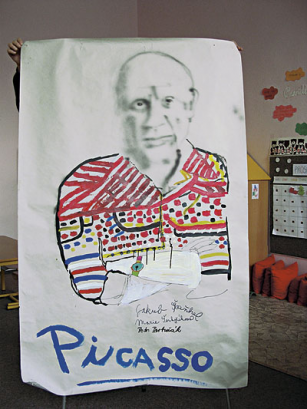














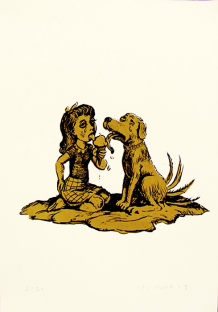




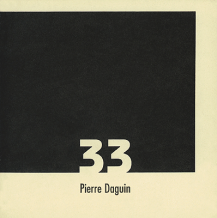
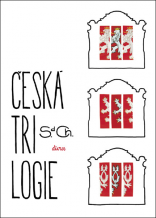
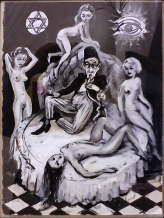
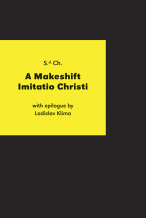


 We Are Rising National Gallery For You! Go to Kyjov by Krásná Lípa no.37.
We Are Rising National Gallery For You! Go to Kyjov by Krásná Lípa no.37.
Comments
There are currently no comments.Add new comment